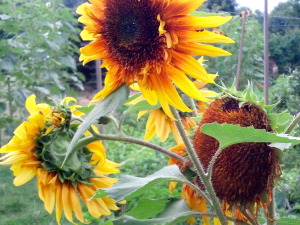It's been nearly a year since I last wrote, on the topic of slow revolutions – which, looking back, is rather ironic, since there's been nothing slow about the last ten months! Instead, it's been a year full of tremendous activity and development. Here's a brief rundown on the last year:
My editing business flourished. For more than 50 clients in 2014, I edited a wide range of documents (20+ scholarly articles, 4 whole journal issues, 6 doctoral dissertations, 3 masters’ theses, 3 books, and numerous job and grant applications). I also began working with more nonprofit and corporate clients, editing not only websites and project documents, but also social media profiles and self-assessments. I've really enjoyed working with social entrepreneurs and nonprofit initiatives, and am working to expand this aspect of my business in 2015.
Awards! In the category of "very exciting news," two of my clients applied for European Research Council grants, and won! These are large, multimillion euro awards that support research projects for five years, funding not only the principal investigator but also postdocs and PhD students. Another one of my clients won a fellowship from the American Council of Learned Sciences, which will allow him time to research and write a book. I am happy to have helped these applications succeed.
New position as Managing Editor. In 2014, I was hired to serve as the managing editor of a new academic journal called Medicine Anthropology Theory: An open-access journal in the anthropology of health, illness, and medicine. As managing editor, I facilitate the editorial team's work, correspond with authors and reviewers, and ensure that content is carefully copy edited. This first year also involved working with a web design team to create a new website, test it, upload all the archival content, and write the copy for the static pages. The first issue was published in December, and since then we have been publishing new content each week, with a second issue, or 'bundle' of content, to be published in April. As part of this work, I attended the annual meeting of the American Anthropological Association in Washington, DC, where I was happy to reconnect with many of my former fellow students and colleagues.
Writing coaching. This fall, I branched out into a new apsect of my editing business: writing coaching. I was fortunate to be flown to Tanzania for a writing workshop for doctoral students. I worked with each student in one-on-one sessions, helping them to discern the underlying narrative for their research data. I found this process intellectually stimulating and enjoyable – taking a bird's-eye view on a whole body of work, and helping authors improve the structure and conceptual framework of their dissertations.
New website is in the works! I'm developing a new website to more accurately convey my editing business to new clients. Stay tuned . . .
Farm update: In addition to all of these editing-related developments, Anne and I continued our work on our little homestead. In 2014, we planted many new perennials: honeyberry, seaberry, flowering quince, paw paw, goji berry, sea kale, jerusalem artichoke, chinese yam, motherwort, and more. We had bountiful harvests of blueberries, raspberries, and grapes, as well as some annual crops: kale, cabbage, cucumbers, zucchini, peppers, tomatillos. We were hit by the late blight here, and lost 3/4 of our tomato crop. We also had a tremendous garlic harvest, with huge bulbs that have lasted all winter. We are hoping to be able to harvest more from our walking onions, sea kale, Turkish rocket, rhubarb, asparagus, scorzonera, and sorrel plants, and to make more use out of some of the plants we began experimenting with last year: violets, spiderwort, Solomon's seal, bee balm.
We decided in the late fall to give away our chickens to a good home. Anne and I looked at the calendar and realized that we were going to be traveling a good portion of November and December, and that it just wasn't feasible to ask our neighbors and friends to care for the chickens during those times. It was sad to see them go, as we really enjoyed their company. But we were glad to find someone in the permaculture community around here who was looking to expand her flock. Who knows, we might get baby chicks again in the future...
And sadly, Jasper the Cat is no longer with us. He didn't show up one morning for breakfast, and, while it's possible that he got lost or that someone adopted him, it's more likely that he met up with something in the forest. He was a great companion, and is still terribly missed.
AirBnB: This summer we painted, redecorated, and refurnished our guest bedroom in order to use it as an AirBnB destination. Anne's brother, David, is a professional photographer, and he took some amazing photographs of the house for us. You can see them on our listing. (Right after he took pictures of the bedroom, however, we found a new headboard and mirror--so the fuzzy picture of the bed was taken by us, not him!) We started taking in guests in August, and have had a lot of fun meeting new people from far-flung places, even Australia! The guests are interesting people who are often gardeners or into permaculture themselves, so we have fun showing them around and treating them to some of our homemade jelly.






